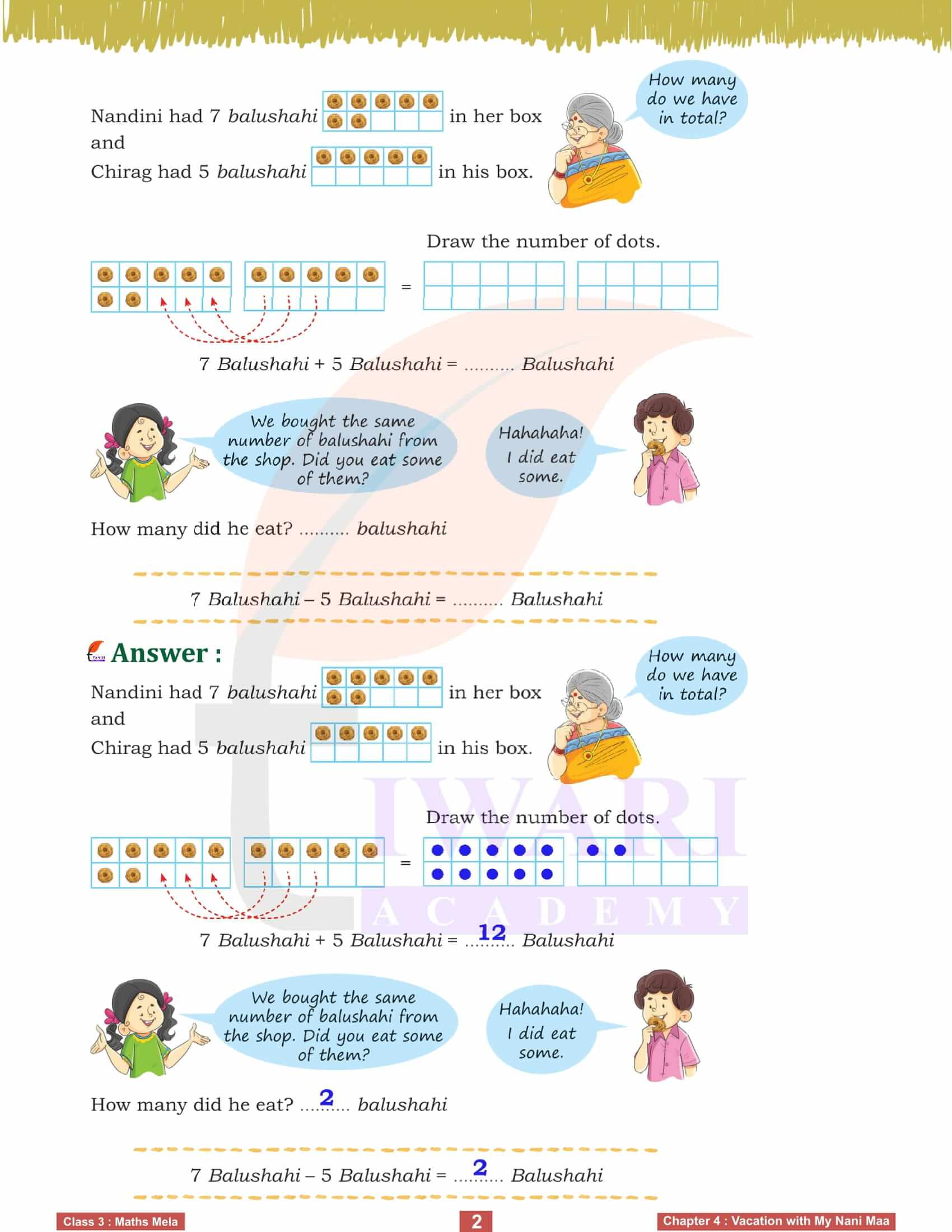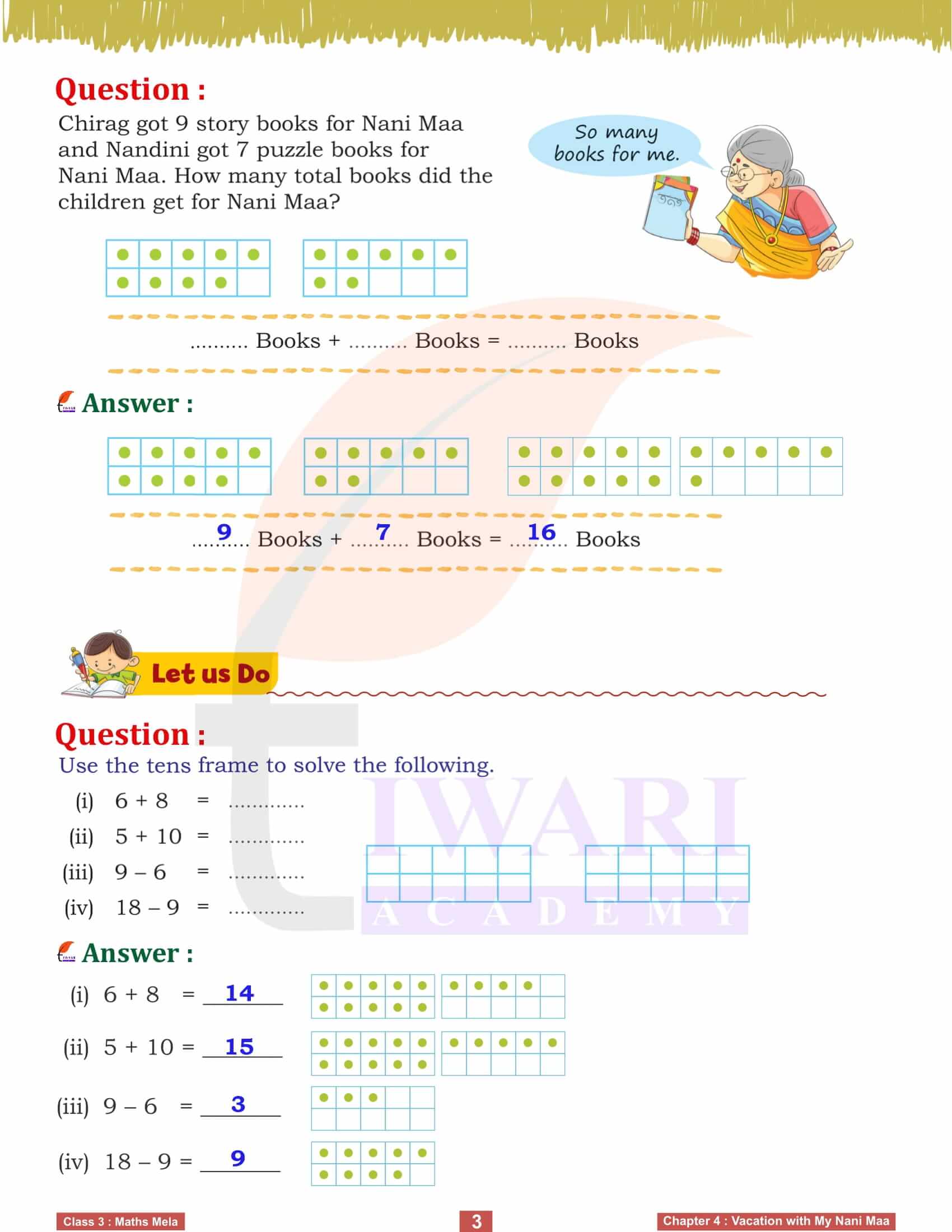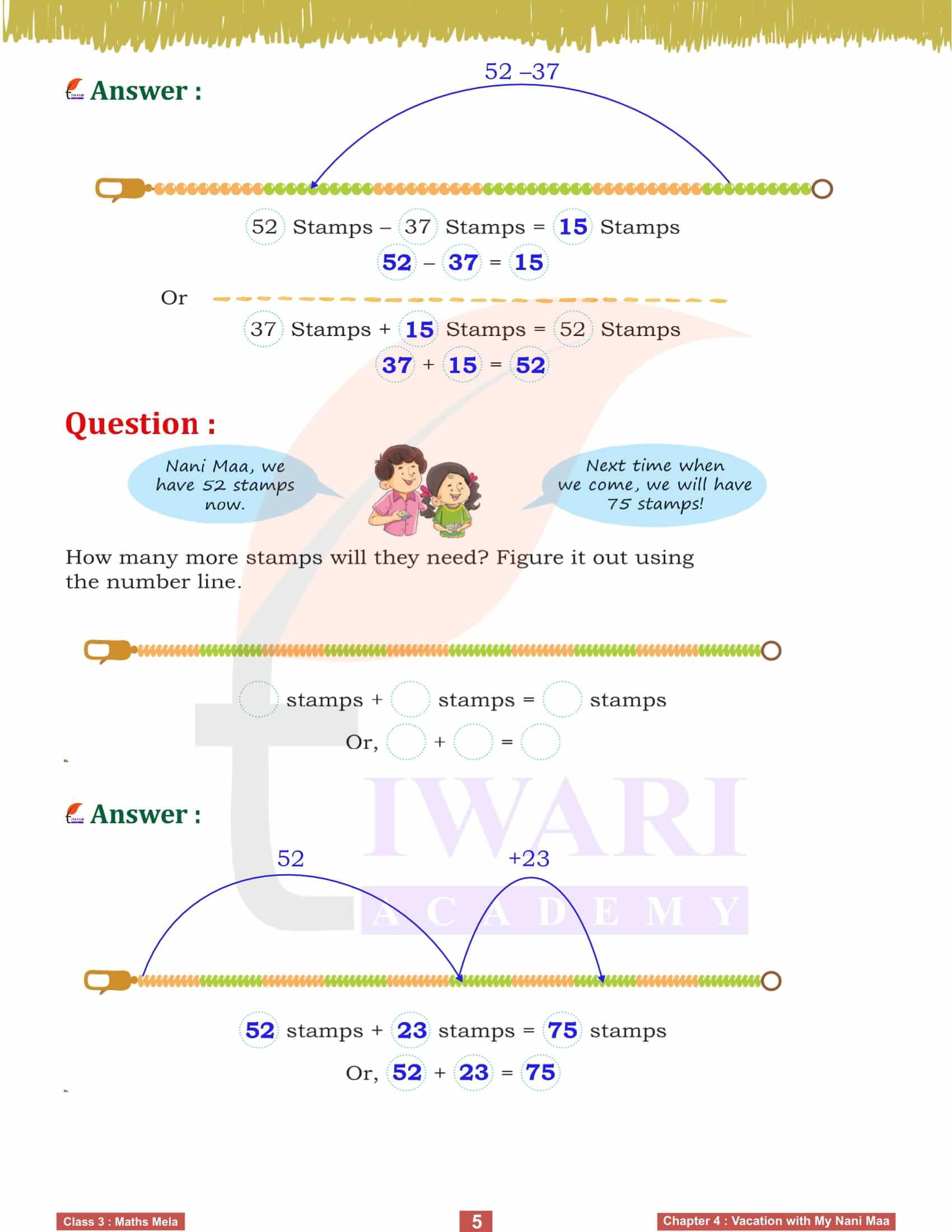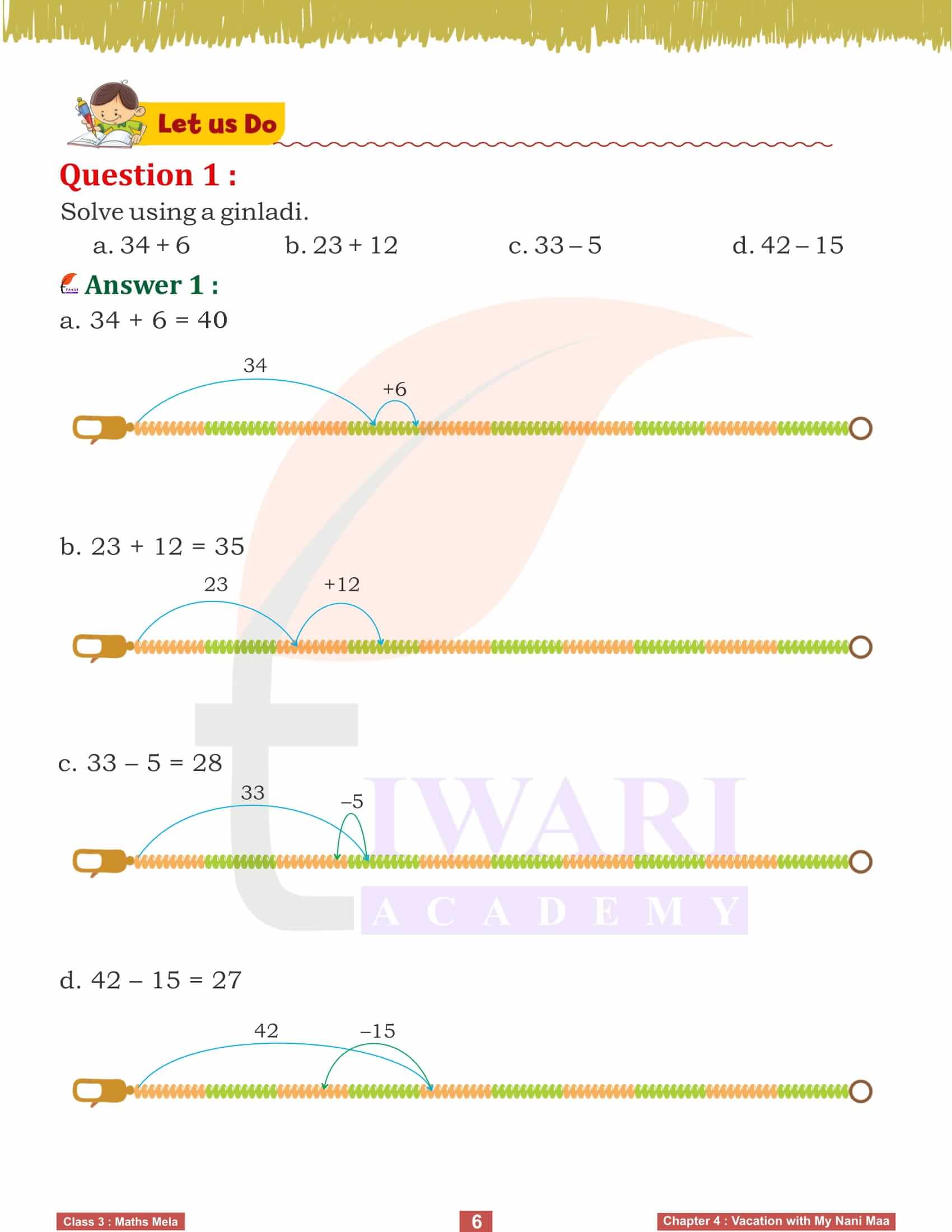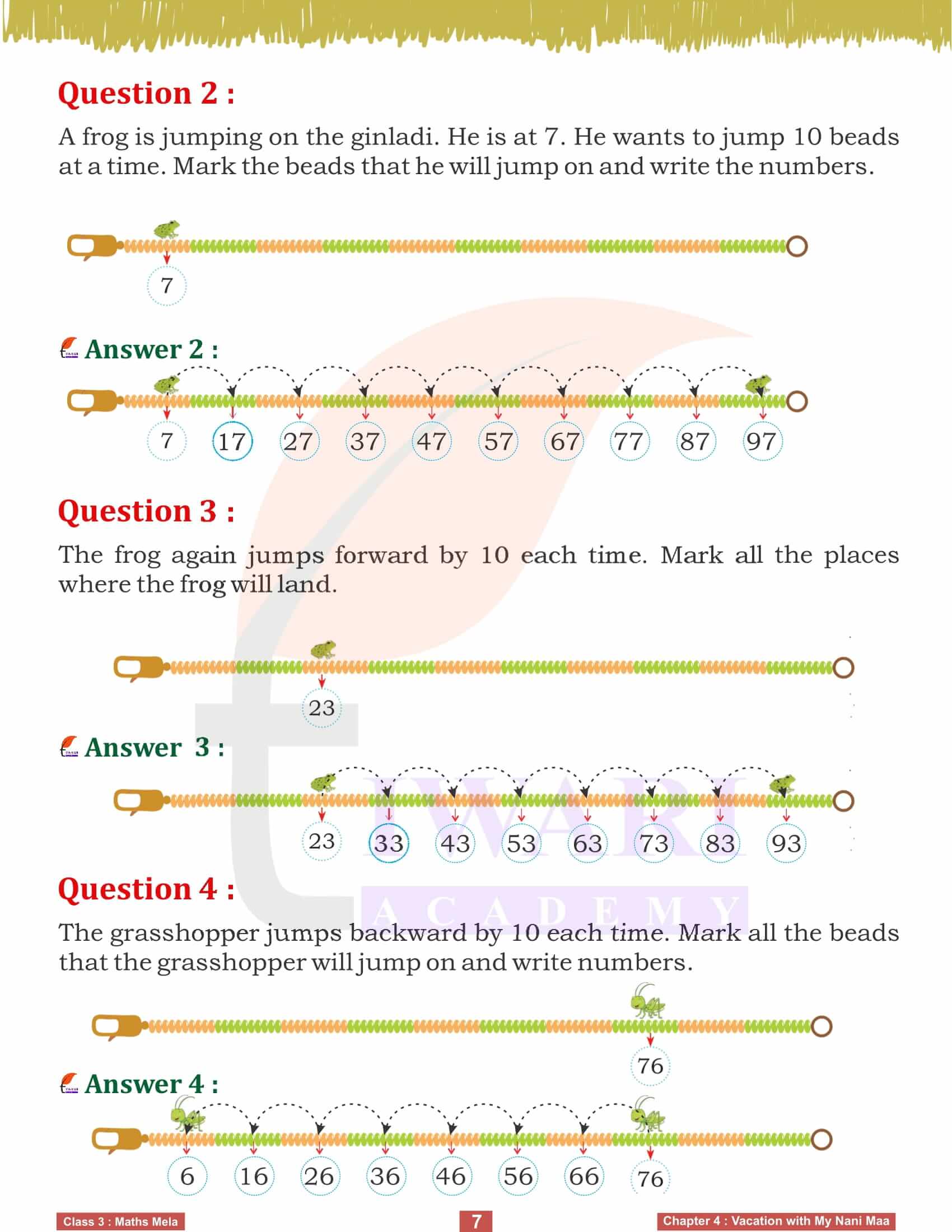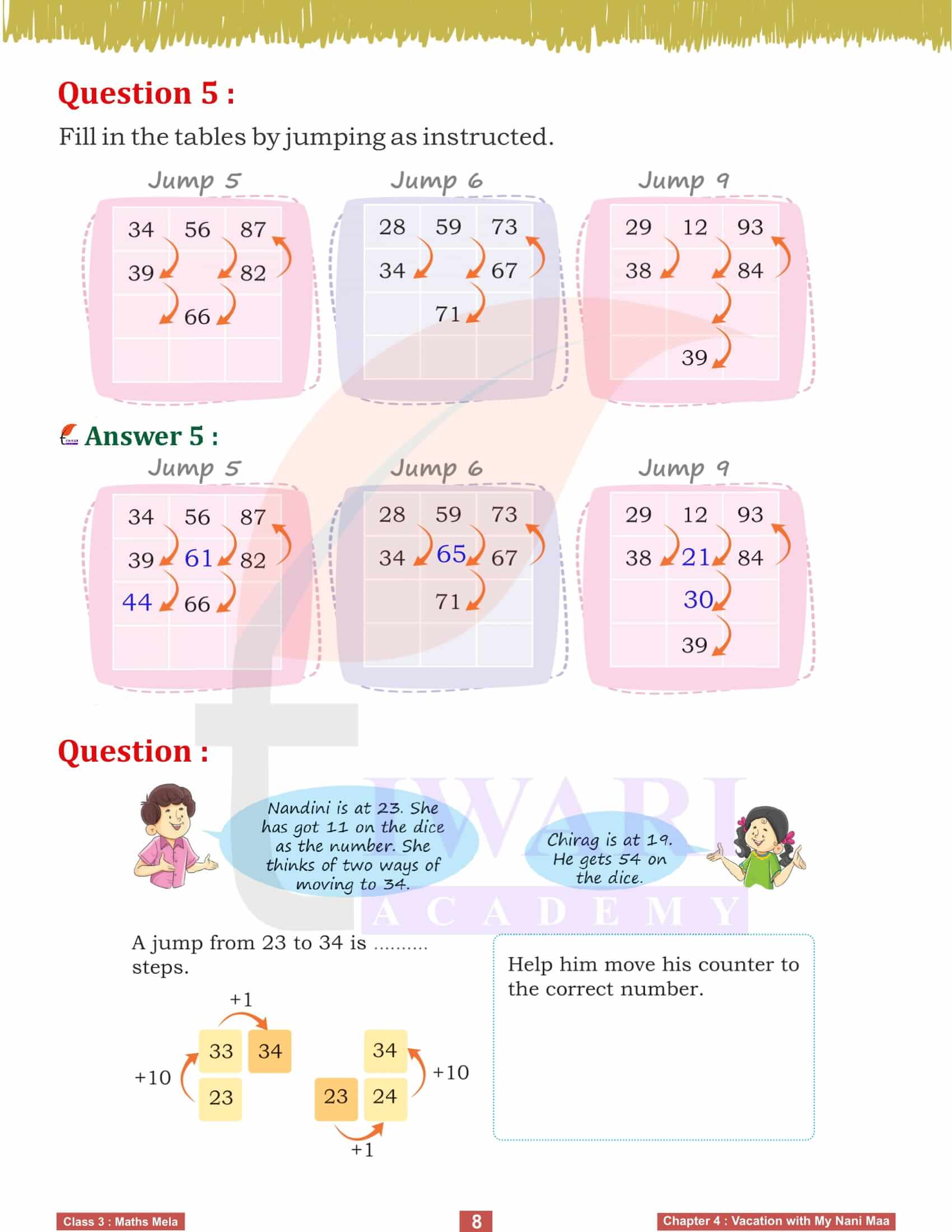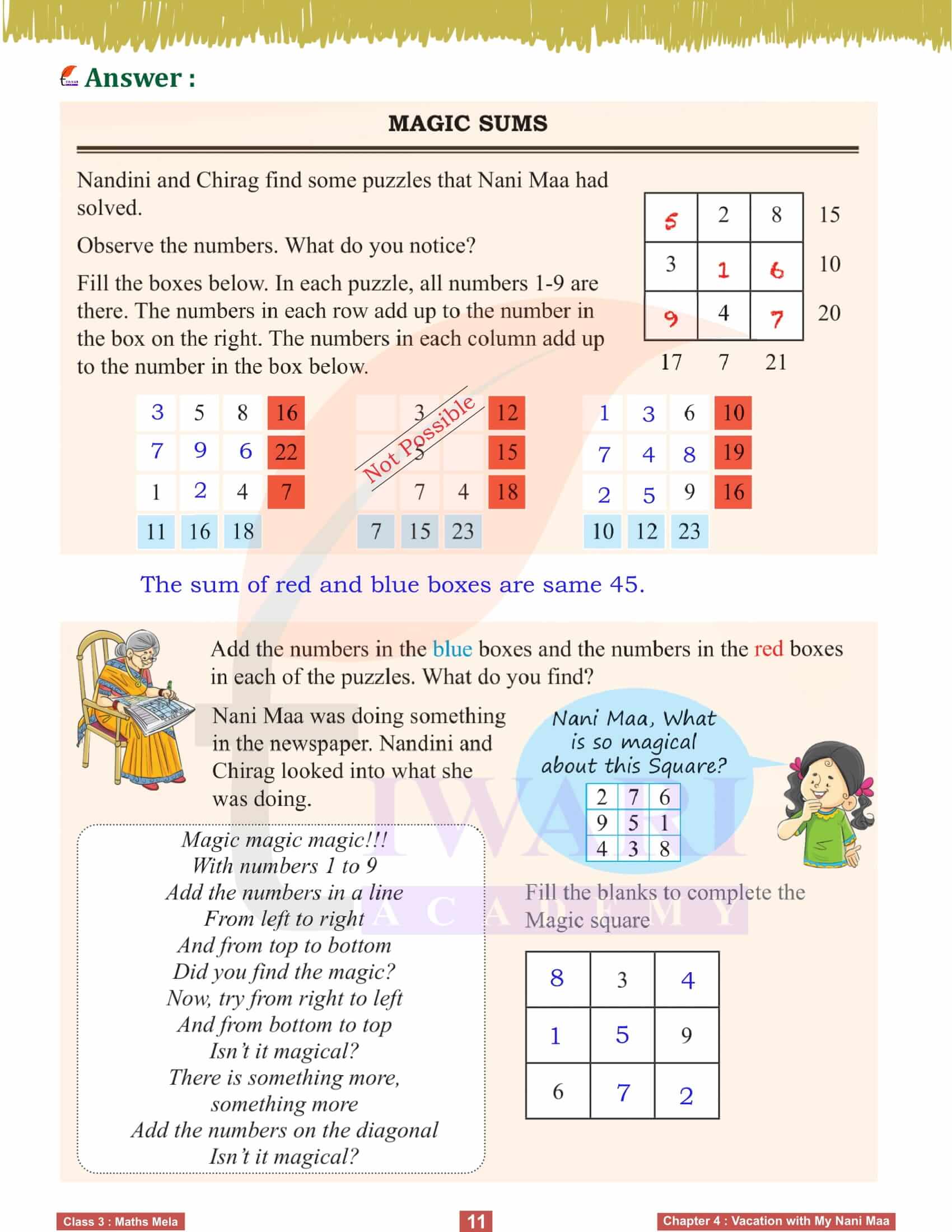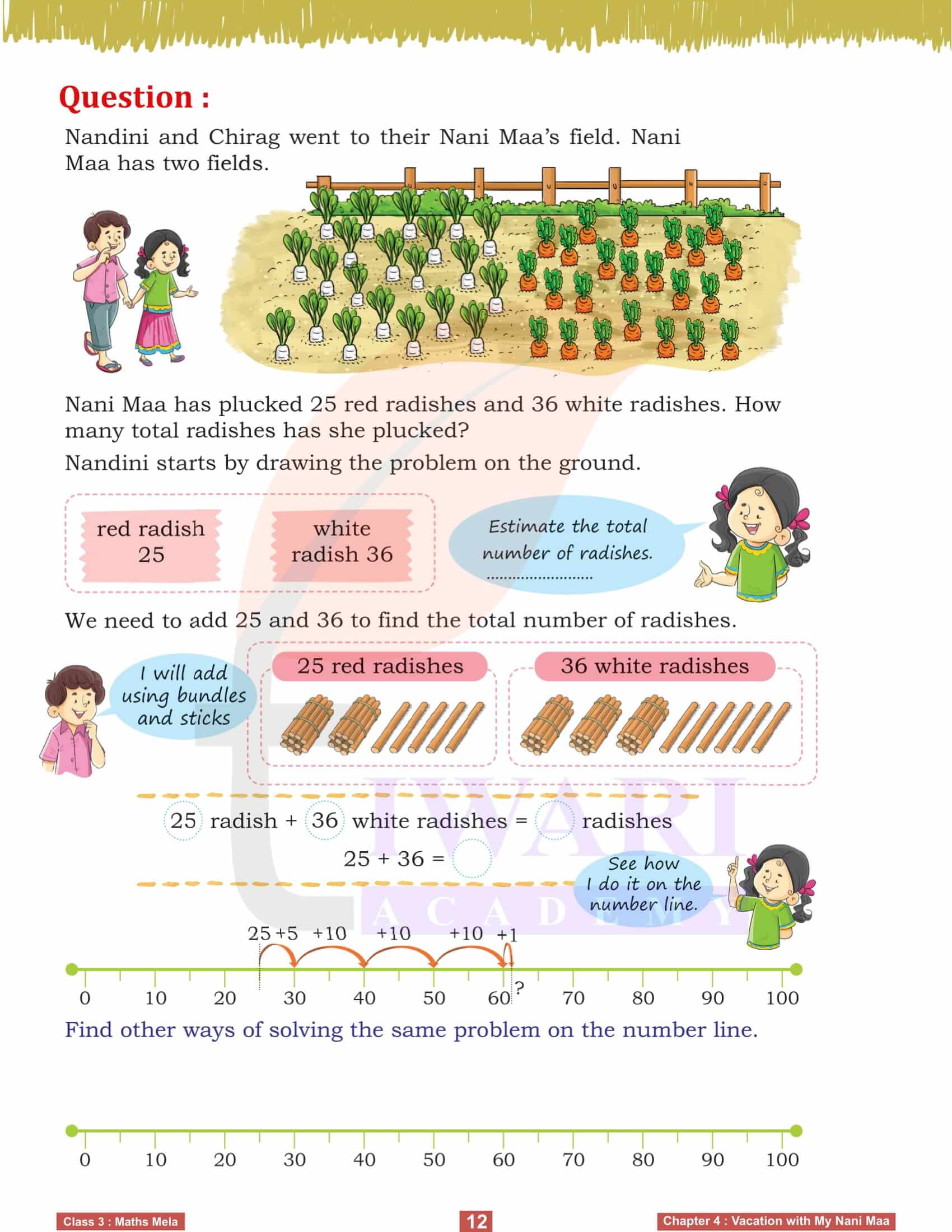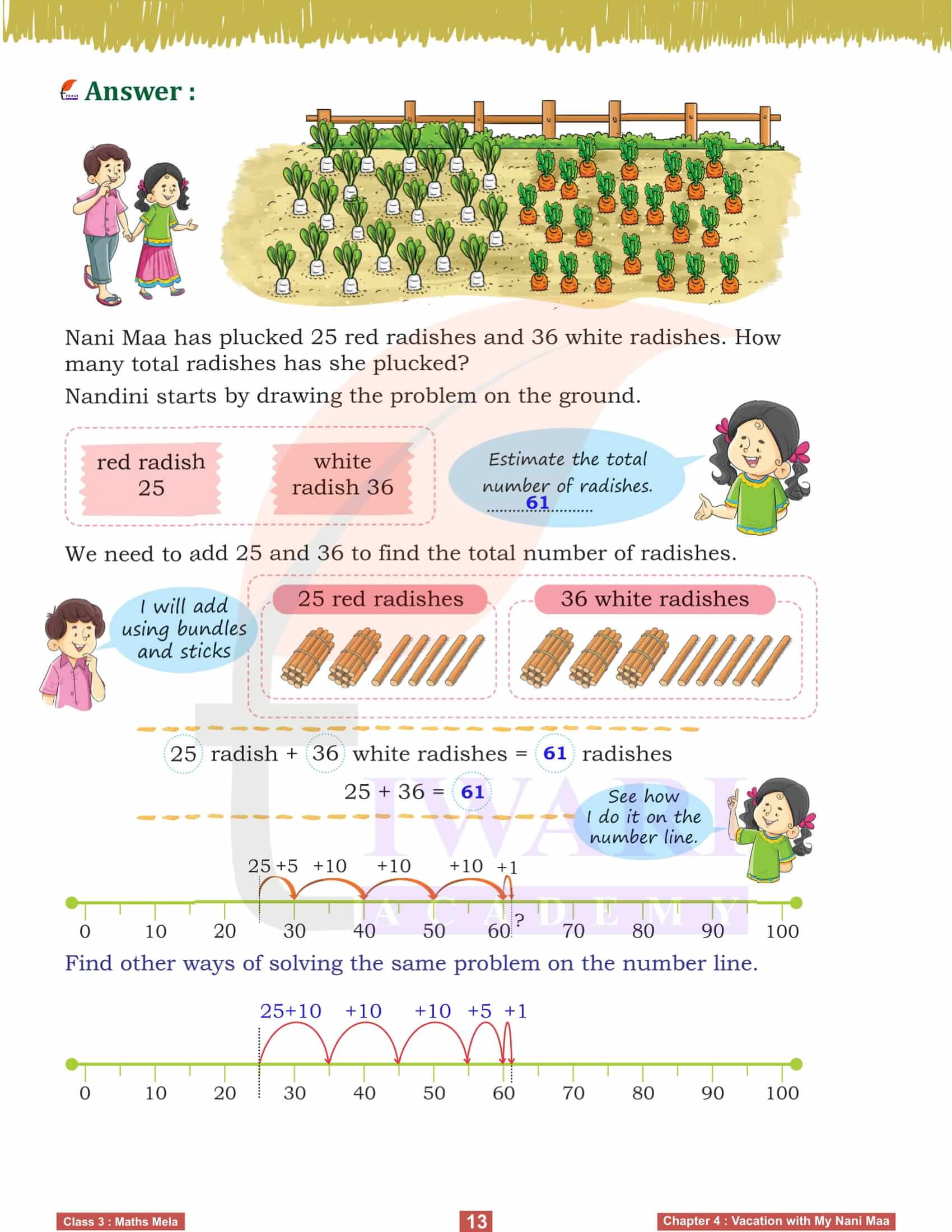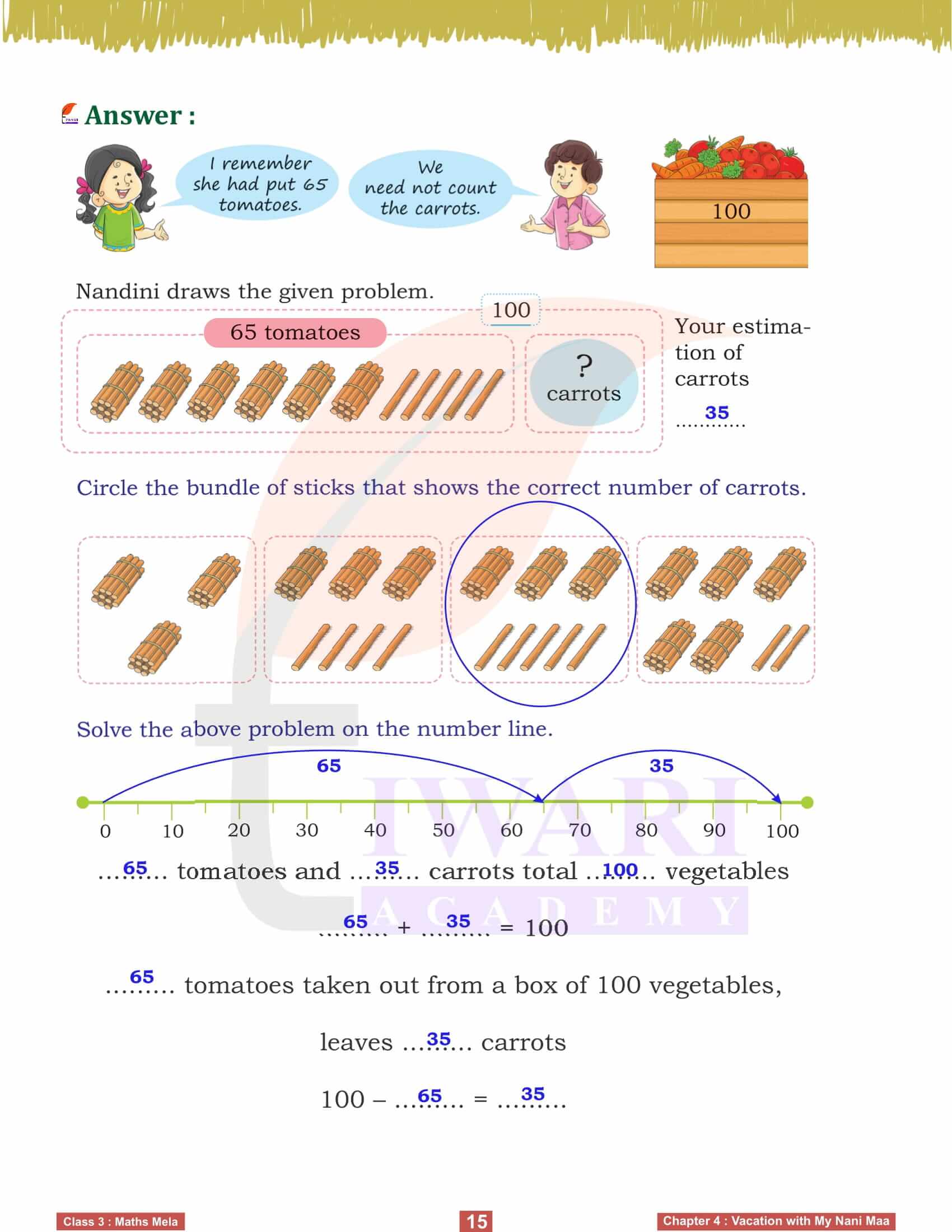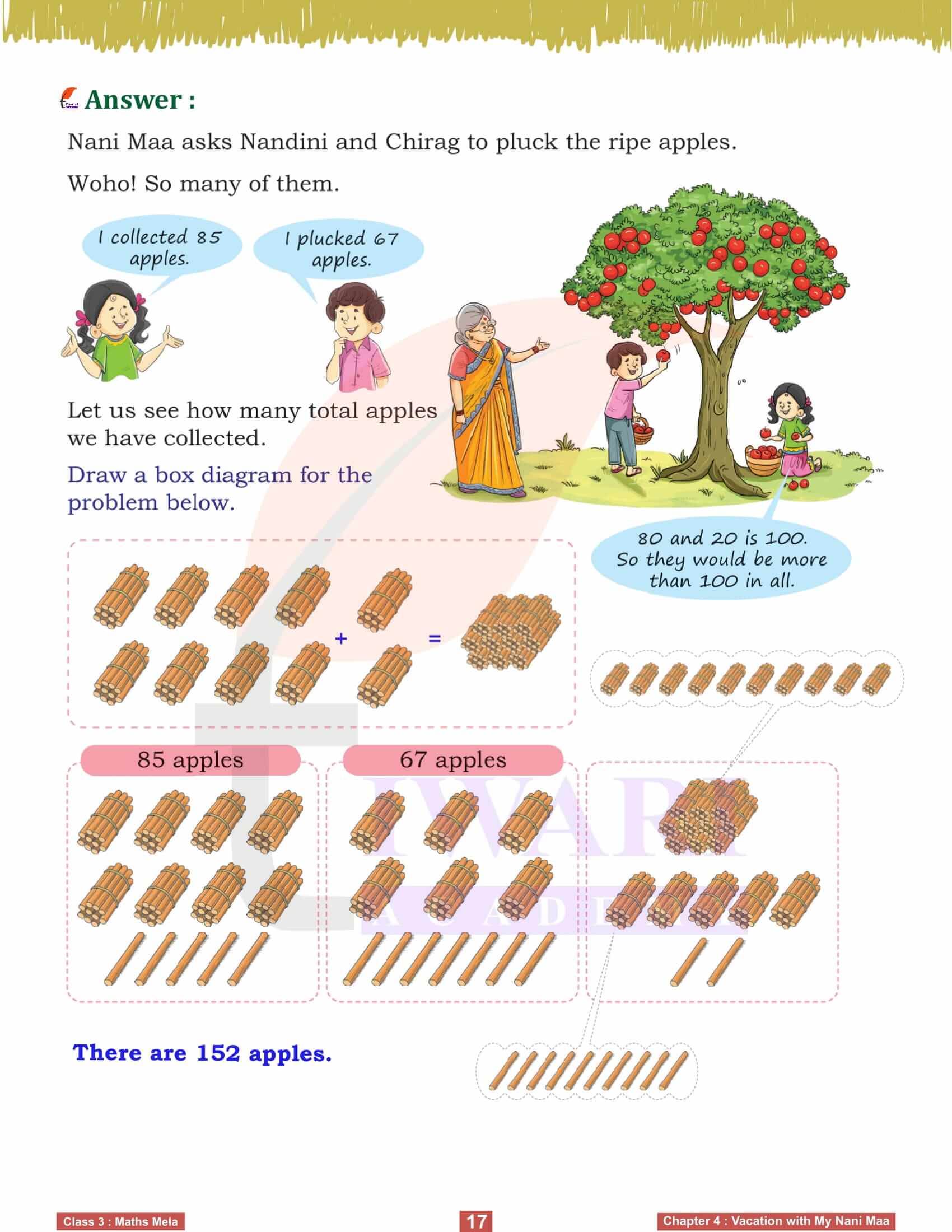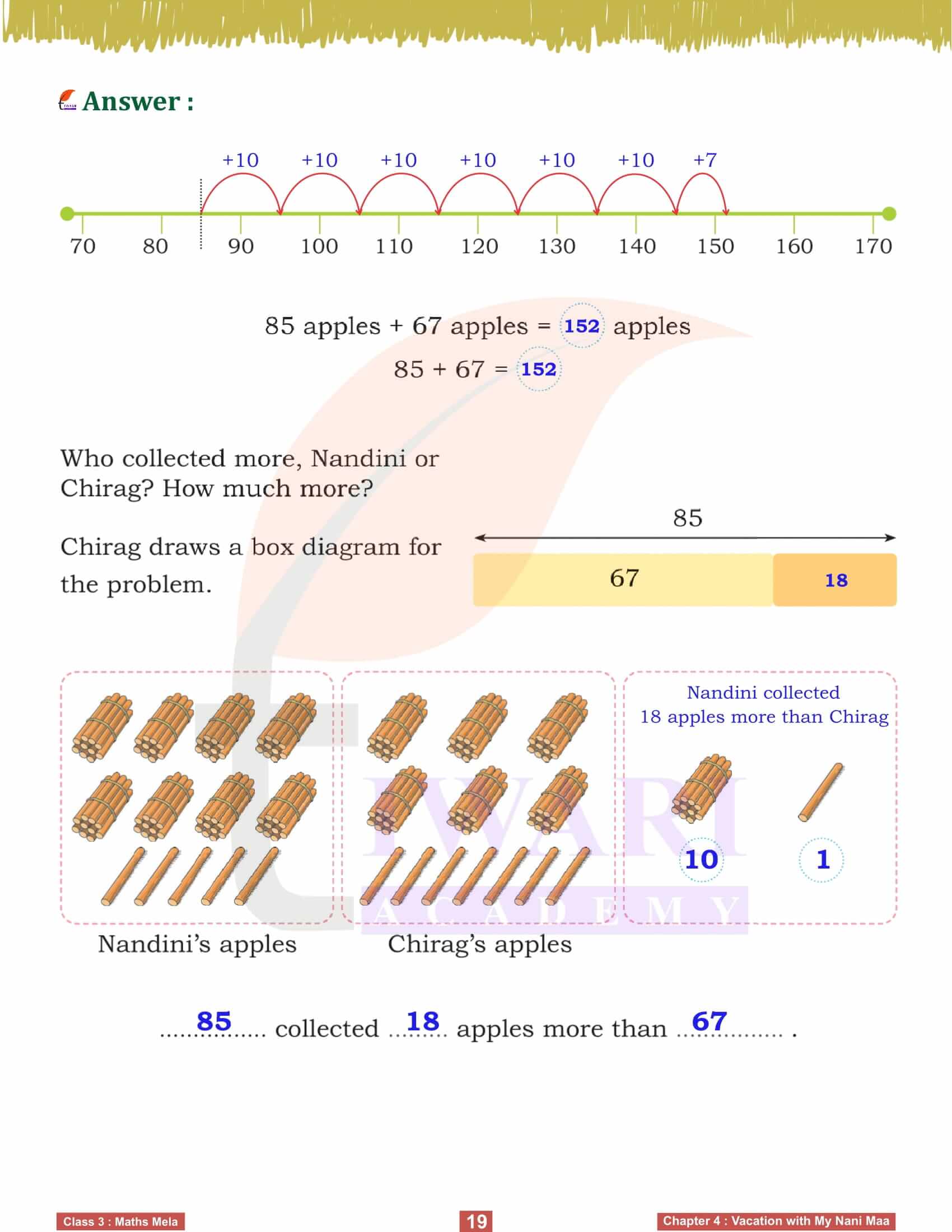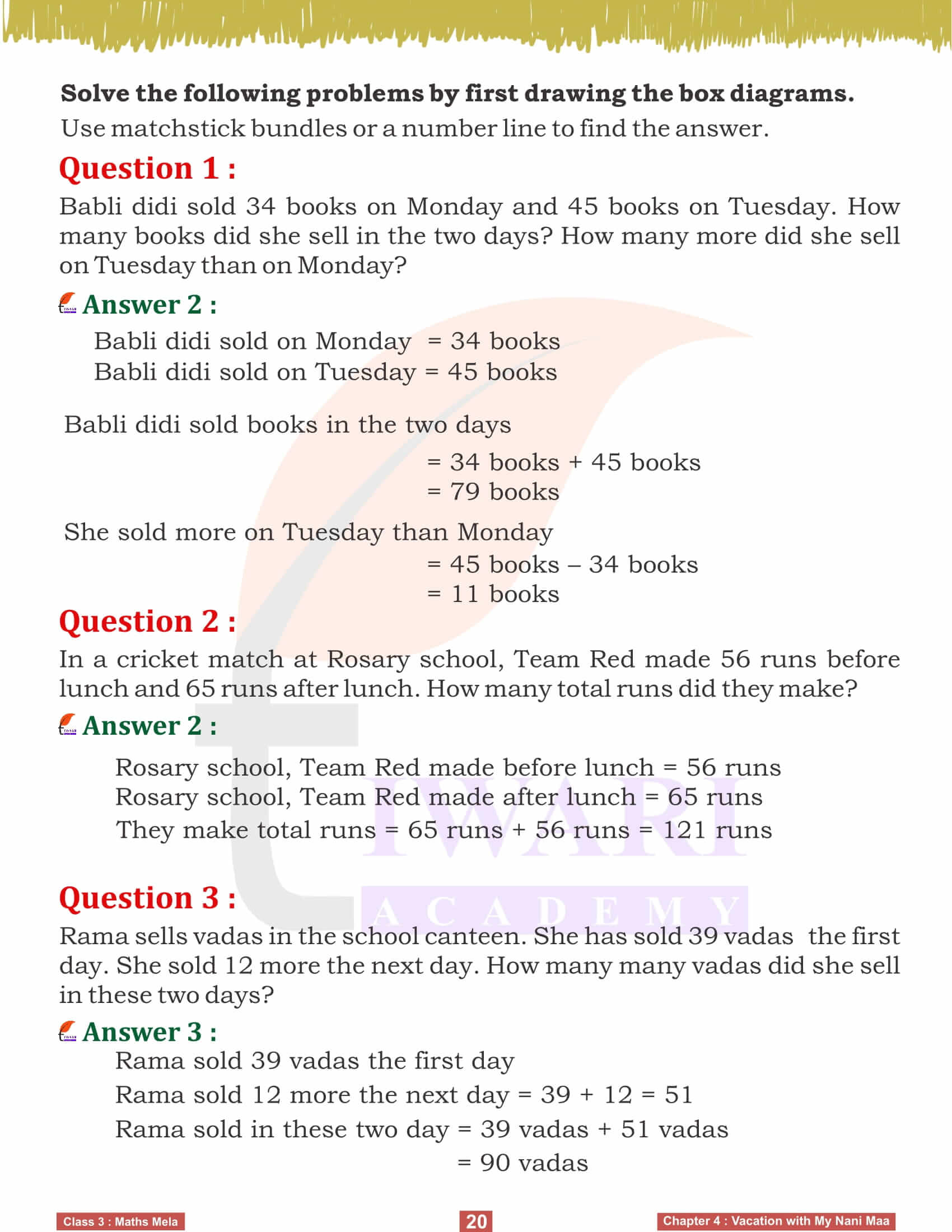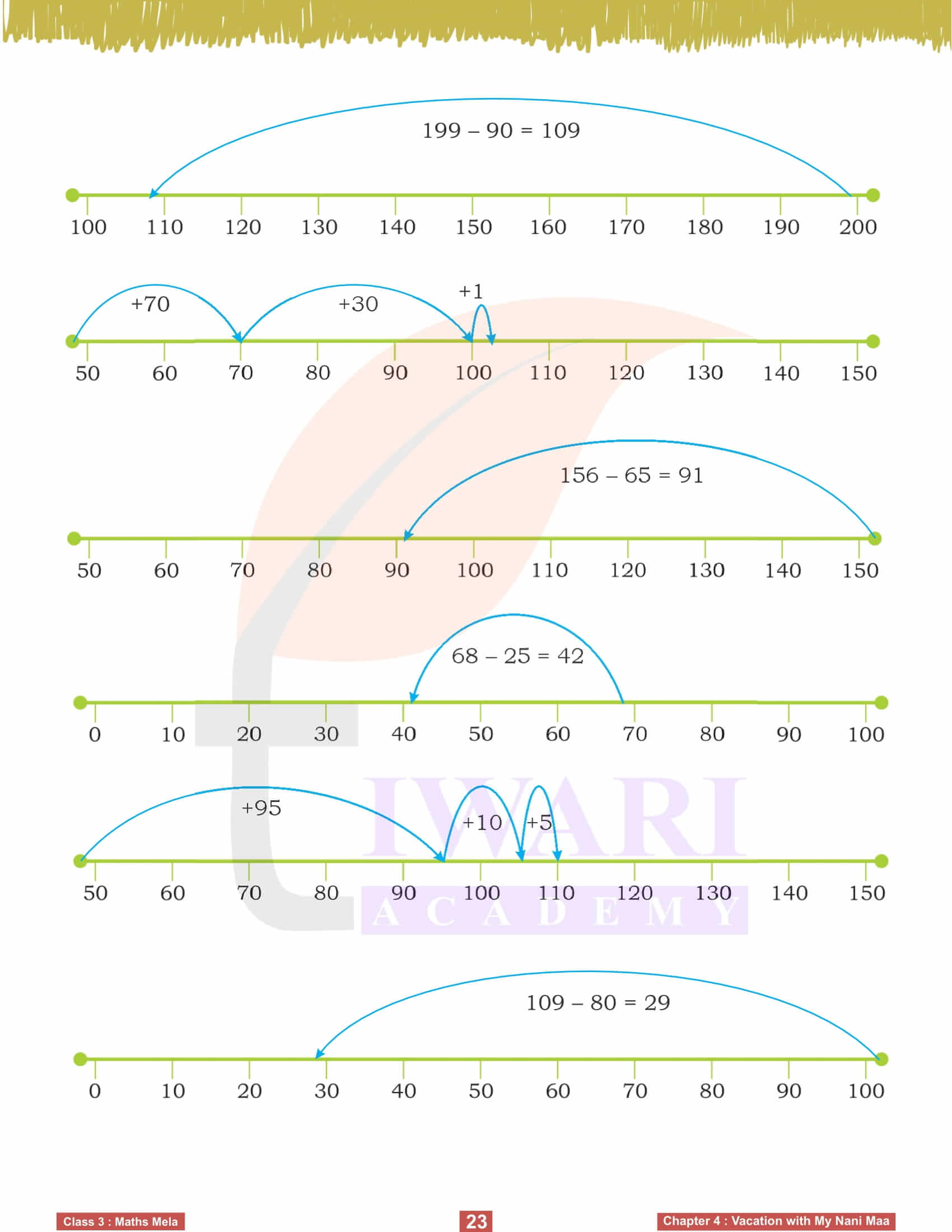NCERT Solutions for Class 3 Maths Mela Chapter 4 Vacation with My Nani Maa in Hindi and English Medium updated for session 2025-26. Class 3 Maths Mela Hindi Medium solution uses the theme of a vacation to teach measurement concepts. Students learn about length, weight and capacity through real-life scenarios such as packing bags, cooking with Nani Maa and traveling. Interactive tasks help students practice measuring objects and comparing quantities, enhancing their understanding of everyday measurements.
Study Tips for Class 3 Math
Class 3 Maths Mela Chapter 4 Vacation with My Nani Maa
Class 3 Maths Mela Chapter 4 Vacation with My Nani Maa
In Chapter 4 of the Class 3 Maths Mela textbook, Vacation with My Nani Maa, students are taken on an exciting journey of learning mathematics through engaging activities and stories. The chapter revolves around the characters Chirag and Nandini, who spend their vacation with their beloved Nani Maa. Through their adventures and interactions, students are introduced to fundamental mathematical concepts in a fun and relatable manner. This chapter aims to enhance their problem-solving skills and foster a love for mathematics.
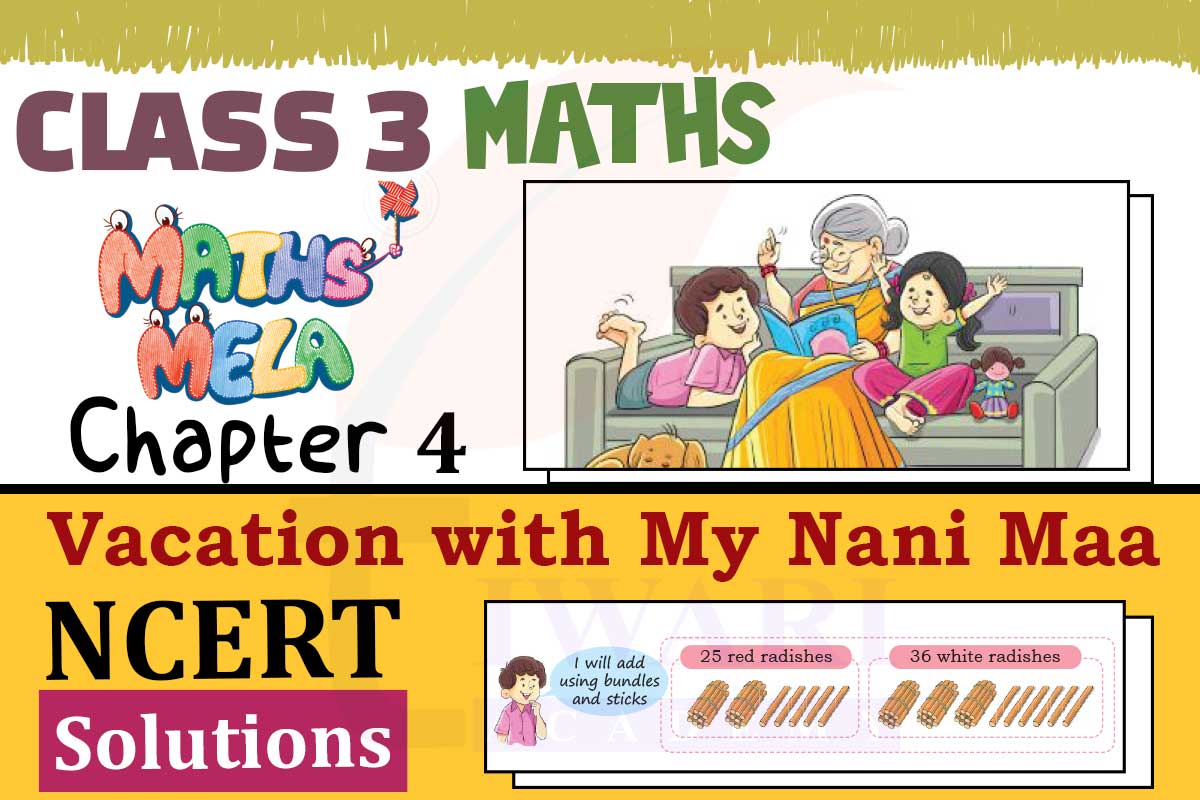
The Magic Trick with Marbles
One of the engaging activities in this chapter is the magic trick Nani Maa shows Chirag and Nandini. In this trick, marbles are hidden under a handkerchief, and the task is to guess the number of hidden marbles based on a pattern. This activity helps students understand basic arithmetic operations and the concept of finding missing numbers. They learn to quickly add and subtract numbers, enhancing their mental math skills. The interactive nature of the trick makes learning enjoyable and reinforces the concept of hidden quantities in a practical context.
Sweet Treats and Subtraction
The chapter 4 continues with a delightful segment where Nandini and Chirag bring their Nani Maa’s favorite sweet, Balushahi. They use these sweets to practice addition and subtraction. For example, Nandini has seven Balushahi, and Chirag has five, and students are asked to find the total number and the difference. This exercise not only teaches basic arithmetic but also introduces the concept of real-life application of math. By using sweets, a familiar and enjoyable item, the chapter makes abstract concepts tangible and easier to grasp.
Stamps Collection and Addition
Nandini and Chirag’s stamp collection presents another exciting mathematical challenge. They start with 15 stamps and receive additional stamps from their Nani Maa and her brother. Students are tasked with calculating the new total, which involves adding different numbers. This section reinforces addition skills and introduces students to larger numbers. The story element keeps students engaged, while the arithmetic exercises help solidify their understanding of addition and the cumulative property of numbers.
Adventures with Number Grids
The number grid game in the chapter is designed to make addition and subtraction more interactive. Students use dice to generate numbers and move counters on a grid. This activity teaches them to navigate numbers, recognize patterns, and understand the relationship between numbers. The game aspect makes learning competitive and fun, encouraging students to practice arithmetic operations repeatedly. Through this activity, students gain confidence in handling numbers and improve their quick calculation skills.
Estimation and Real-life Problem Solving
The chapter 4 includes several real-life problem-solving scenarios, such as estimating the number of vegetables in a box or calculating the total number of apples collected. These exercises teach students to apply their mathematical knowledge to everyday situations. They learn to make estimates, perform accurate calculations, and understand the importance of precision. By solving these problems, students develop critical thinking skills and the ability to approach real-life challenges mathematically.
Conclusion: The Joy of Learning with Nani Maa
“Vacation with My Nani Maa” is not just about teaching math; it’s about making learning an enjoyable experience. Through stories, games, and practical activities, the chapter makes mathematical concepts accessible and fun. Chirag and Nandini’s adventures with their Nani Maa provide a context that students can relate to, making the learning process more engaging. By the end of the chapter 4, students not only improve their arithmetic skills but also develop a positive attitude towards mathematics, understanding that it’s a part of everyday life and can be fun to learn.
Related Links

